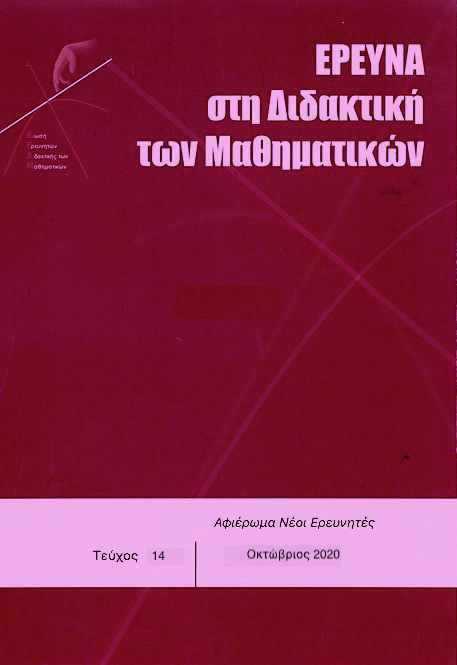HIGH SCHOOL STUDENTS USING DYNAMIC GEOMETRY TOOLS TO UNDERSTAND QUADRILATERAL PROPERTIES AND RELATIONSHIPS

Abstract
The present study investigated the effectiveness of using Dynamic Geometry tools with Geogebra software in relation to the use of traditional tools to understand quadrilateral properties and relationships and to solve geometrical problems. The participants were students of Grade 10, who were divided into eight pairs based on their cognitive and perceptual levels of quadrilateral and engaged in activities involving constructions, finding quadruped species, geometrical problems, and questions about quadrilateral properties and relationships. In the activities the 4 pairs used the software and the rest used the traditional tools. The results of the study showed that students who worked with the software understood the properties and relationships of quadrilateral better and solved geometric problems more easily.
Article Details
- How to Cite
-
Μαρκοπούλου (Eleni Markopoulou) Ε. (2020). HIGH SCHOOL STUDENTS USING DYNAMIC GEOMETRY TOOLS TO UNDERSTAND QUADRILATERAL PROPERTIES AND RELATIONSHIPS. Research in Mathematics Education, (14), 22–34. https://doi.org/10.12681/enedim.22051
- Section
- Young Researchers

This work is licensed under a Creative Commons Attribution 4.0 International License.
Authors who publish with this journal agree to the following terms:
Authors retain copyright and grant the journal right of first publication with the work simultaneously licensed under a Creative Commons Attribution licence that allows others to share the work with an acknowledgement of the work's authorship and initial publication in this journal.
Authors are able to enter into separate, additional contractual arrangements for the non-exclusive distribution of the journal's published version of the work (e.g. post it to an institutional repository or publish it in a book), with an acknowledgement of its initial publication in this journal.
Authors are permitted and encouraged to post their work online (preferably in institutional repositories or on their website) prior to and during the submission process, as it can lead to productive exchanges, as well as earlier and greater citation of published work (See The Effect of Open Access).


